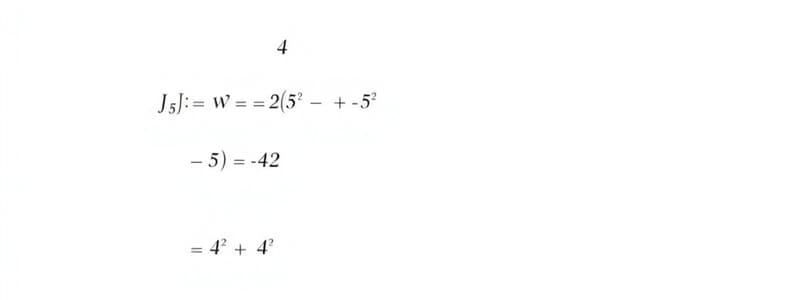Podcast
Questions and Answers
Which of the following best describes the primary mechanism of action of statins?
Which of the following best describes the primary mechanism of action of statins?
- Preventing the degradation of LDL receptors.
- Inhibiting HMG-CoA reductase, a key enzyme in cholesterol synthesis. (correct)
- Inhibiting the reabsorption of bile acids in the intestines.
- Increasing the activity of lipoprotein lipase (LPL).
How do bile acid resins lower LDL cholesterol levels?
How do bile acid resins lower LDL cholesterol levels?
- By directly breaking down LDL particles in the bloodstream.
- By preventing the reabsorption of bile acids, which prompts the liver to upregulate LDL receptors. (correct)
- By stimulating the activity of hormone-sensitive lipase (HSL).
- By inhibiting the synthesis of cholesterol in the liver.
Ezetimibe reduces cholesterol by which of the following mechanisms?
Ezetimibe reduces cholesterol by which of the following mechanisms?
- Inhibiting the synthesis of triglycerides.
- Preventing the absorption of cholesterol in the small intestine. (correct)
- Inhibiting hormone-sensitive lipase (HSL).
- Activating peroxisome proliferator-activated receptors (PPARs).
Fibrates primarily affect which of the following?
Fibrates primarily affect which of the following?
Niacin's mechanism of action includes which of the following?
Niacin's mechanism of action includes which of the following?
PCSK9 inhibitors lower LDL cholesterol by which mechanism?
PCSK9 inhibitors lower LDL cholesterol by which mechanism?
What is the primary mechanism by which fish oil and marine omega-3 fatty acids affect lipid levels?
What is the primary mechanism by which fish oil and marine omega-3 fatty acids affect lipid levels?
Which drug primarily targets cholesterol reabsorption in the small intestine?
Which drug primarily targets cholesterol reabsorption in the small intestine?
If a patient has high triglycerides and the doctor wants to prescribe a drug that mainly acts on PPARs, which drug would be most appropriate?
If a patient has high triglycerides and the doctor wants to prescribe a drug that mainly acts on PPARs, which drug would be most appropriate?
Which of these drugs can lead to an increased breakdown of LDL particles because of an increase to LDL receptor activity?
Which of these drugs can lead to an increased breakdown of LDL particles because of an increase to LDL receptor activity?
A patient is prescribed a medication that inhibits hormone-sensitive lipase (HSL). Which medication is the patient most likely taking?
A patient is prescribed a medication that inhibits hormone-sensitive lipase (HSL). Which medication is the patient most likely taking?
Which medication directly prevents LDL receptor degradation, leading to increased removal of LDL particles from the circulation?
Which medication directly prevents LDL receptor degradation, leading to increased removal of LDL particles from the circulation?
Which medication inhibits triglyceride synthesis and decreases FFA release and delivery to the liver?
Which medication inhibits triglyceride synthesis and decreases FFA release and delivery to the liver?
A patient with elevated LDL cholesterol is prescribed a medication that primarily works by upregulating LDL receptors in the liver. Which of the following medications is most likely prescribed?
A patient with elevated LDL cholesterol is prescribed a medication that primarily works by upregulating LDL receptors in the liver. Which of the following medications is most likely prescribed?
Which lipid-lowering agent directly impacts VLDL levels by reducing free fatty acids reaching the liver?
Which lipid-lowering agent directly impacts VLDL levels by reducing free fatty acids reaching the liver?
Which of the following is a common mechanism shared by both Niacin and Fish Oil in managing lipid profiles?
Which of the following is a common mechanism shared by both Niacin and Fish Oil in managing lipid profiles?
Which of the following medications reduces triglycerides by activating an enzyme that breaks down triglycerides in the blood?
Which of the following medications reduces triglycerides by activating an enzyme that breaks down triglycerides in the blood?
Which of the following promotes the recycling of LDL receptors, leading to enhanced breakdown of LDL particles?
Which of the following promotes the recycling of LDL receptors, leading to enhanced breakdown of LDL particles?
Which medication lowers LDL cholesterol by binding to bile acids in the intestine?
Which medication lowers LDL cholesterol by binding to bile acids in the intestine?
Which one of the following cholesterol-lowering medications is primarily used to decrease Triglycerides?
Which one of the following cholesterol-lowering medications is primarily used to decrease Triglycerides?
How does inhibiting HMG-CoA reductase with statins lead to increased LDL receptor activity?
How does inhibiting HMG-CoA reductase with statins lead to increased LDL receptor activity?
Why does the inhibition of bile acid reabsorption lead to a decrease in blood LDL cholesterol levels?
Why does the inhibition of bile acid reabsorption lead to a decrease in blood LDL cholesterol levels?
A patient with hyperlipidemia is prescribed ezetimibe. What direct effect does this medication have on cholesterol levels?
A patient with hyperlipidemia is prescribed ezetimibe. What direct effect does this medication have on cholesterol levels?
How do fibrates affect the metabolism of triglycerides and VLDL?
How do fibrates affect the metabolism of triglycerides and VLDL?
What is the primary mechanism by which Niacin reduces VLDL levels in the blood?
What is the primary mechanism by which Niacin reduces VLDL levels in the blood?
How do PCSK9 inhibitors lead to lower LDL cholesterol levels?
How do PCSK9 inhibitors lead to lower LDL cholesterol levels?
How do fish oil and marine omega-3 fatty acids contribute to reducing triglyceride levels?
How do fish oil and marine omega-3 fatty acids contribute to reducing triglyceride levels?
A patient has elevated LDL cholesterol. The physician wants to prescribe a drug that will cause the liver to recycle more LDL receptors. Which of the following medications would achieve this outcome?
A patient has elevated LDL cholesterol. The physician wants to prescribe a drug that will cause the liver to recycle more LDL receptors. Which of the following medications would achieve this outcome?
Which of the following best describes a key difference between the mechanisms of action of Niacin and Fibrates in the treatment of hyperlipidemia?
Which of the following best describes a key difference between the mechanisms of action of Niacin and Fibrates in the treatment of hyperlipidemia?
A patient with high triglyceride levels is started on fish oil. What impact will this likely have on free fatty acids?
A patient with high triglyceride levels is started on fish oil. What impact will this likely have on free fatty acids?
Which of the following medications impacts LDL cholesterol levels by directly affecting cholesterol absorption in the small intestine?
Which of the following medications impacts LDL cholesterol levels by directly affecting cholesterol absorption in the small intestine?
A patient is prescribed a medication that ultimately increases the breakdown of triglycerides in the blood. Which drug is most likely to have this effect?
A patient is prescribed a medication that ultimately increases the breakdown of triglycerides in the blood. Which drug is most likely to have this effect?
A patient is prescribed medication that inhibits hormone-sensitive lipase (HSL). This action will directly impact which of the following?
A patient is prescribed medication that inhibits hormone-sensitive lipase (HSL). This action will directly impact which of the following?
How do bile acid resins lower LDL cholesterol levels in the bloodstream?
How do bile acid resins lower LDL cholesterol levels in the bloodstream?
A patient with elevated triglycerides is prescribed a medication that decreases FFA release and delivery to the liver. Which medication is the patient most likely taking?
A patient with elevated triglycerides is prescribed a medication that decreases FFA release and delivery to the liver. Which medication is the patient most likely taking?
How can inhibiting triglyceride synthesis contribute to lowering LDL levels?
How can inhibiting triglyceride synthesis contribute to lowering LDL levels?
A doctor decides to prescribe a medication that prevents PCSK9 from binding to LDL receptors. What is the intended effect of this therapy?
A doctor decides to prescribe a medication that prevents PCSK9 from binding to LDL receptors. What is the intended effect of this therapy?
How does increased activation of PPARs through fibrate medications contribute to improved lipid profiles?
How does increased activation of PPARs through fibrate medications contribute to improved lipid profiles?
A patient has high triglycerides and low HDL cholesterol. Which medication functions primarily by reducing free fatty acids that reach the liver?
A patient has high triglycerides and low HDL cholesterol. Which medication functions primarily by reducing free fatty acids that reach the liver?
How does the use of bile acid sequestrants impact LDL receptor activity in the liver?
How does the use of bile acid sequestrants impact LDL receptor activity in the liver?
Flashcards
Statins Mechanism
Statins Mechanism
Inhibits HMG-CoA reductase, a key enzyme in cholesterol biosynthesis, reducing cholesterol production in the liver.
Bile Acid Resins
Bile Acid Resins
Prevent bile acid reabsorption in the intestines, leading to lower cholesterol levels by upregulating LDL receptors.
Ezetimibe Action
Ezetimibe Action
Prevents cholesterol reabsorption at the small intestine brush border, reducing cholesterol absorption into the bloodstream.
Fibrates (PPARs)
Fibrates (PPARs)
Signup and view all the flashcards
Niacin (B3)
Niacin (B3)
Signup and view all the flashcards
PCSK9 Inhibitors
PCSK9 Inhibitors
Signup and view all the flashcards
Fish oil mechanism
Fish oil mechanism
Signup and view all the flashcards
Study Notes
- A vector-valued function of a real variable is a function $\overrightarrow{r}: \mathbb{R} \rightarrow \mathbb{R}^n$ that assigns a vector $\overrightarrow{r}(t)$ in $\mathbb{R}^n$ to each real number $t$.
Components
- A vector-valued function $\overrightarrow{r}(t)$ can be expressed in terms of its component functions: $\overrightarrow{r}(t) = \langle f_1(t), f_2(t),..., f_n(t) \rangle$, where $f_i(t)$ are real-valued functions of a real variable.
Example
- $\overrightarrow{r}(t) = \langle t^2, \sin(t), e^t \rangle$ is a vector-valued function in $\mathbb{R}^3$.
Limit
- The limit of a vector-valued function $\overrightarrow{r}(t)$ as $t$ approaches $a$ is the vector formed by the limits of its component functions, provided these limits exist: $\lim_{t \to a} \overrightarrow{r}(t) = \langle \lim_{t \to a} f_1(t), \lim_{t \to a} f_2(t),..., \lim_{t \to a} f_n(t) \rangle$.
Continuity
- A vector-valued function $\overrightarrow{r}(t)$ is continuous at $t = a$ if the following conditions are met:
- $\overrightarrow{r}(a)$ is defined.
- $\lim_{t \to a} \overrightarrow{r}(t)$ exists.
- $\lim_{t \to a} \overrightarrow{r}(t) = \overrightarrow{r}(a)$.
- Continuity of $\overrightarrow{r}(t)$ is equivalent to all of its component functions being continuous at $t = a$.
Derivative
- The derivative of a vector-valued function $\overrightarrow{r}(t)$ is defined as: $\overrightarrow{r}\ '(t) = \lim_{h \to 0} \frac{\overrightarrow{r}(t+h) - \overrightarrow{r}(t)}{h}$.
- The derivative is calculated by differentiating each of its component functions: $\overrightarrow{r}\ '(t) = \langle f_1'(t), f_2'(t),..., f_n'(t) \rangle$.
Integral
- The integral of a vector-valued function $\overrightarrow{r}(t)$ is calculated by integrating each of its component functions: $\int \overrightarrow{r}(t) dt = \langle \int f_1(t) dt, \int f_2(t) dt,..., \int f_n(t) dt \rangle + \overrightarrow{C}$, where $\overrightarrow{C}$ is a constant vector of integration.
Geometric Interpretation
- A vector-valued function $\overrightarrow{r}(t)$ describes a curve in space as the parameter $t$ varies.
- The derivative $\overrightarrow{r}\ '(t)$ is a tangent vector to the curve at the point $\overrightarrow{r}(t)$, indicating the direction and sense of movement along the curve.
Studying That Suits You
Use AI to generate personalized quizzes and flashcards to suit your learning preferences.




